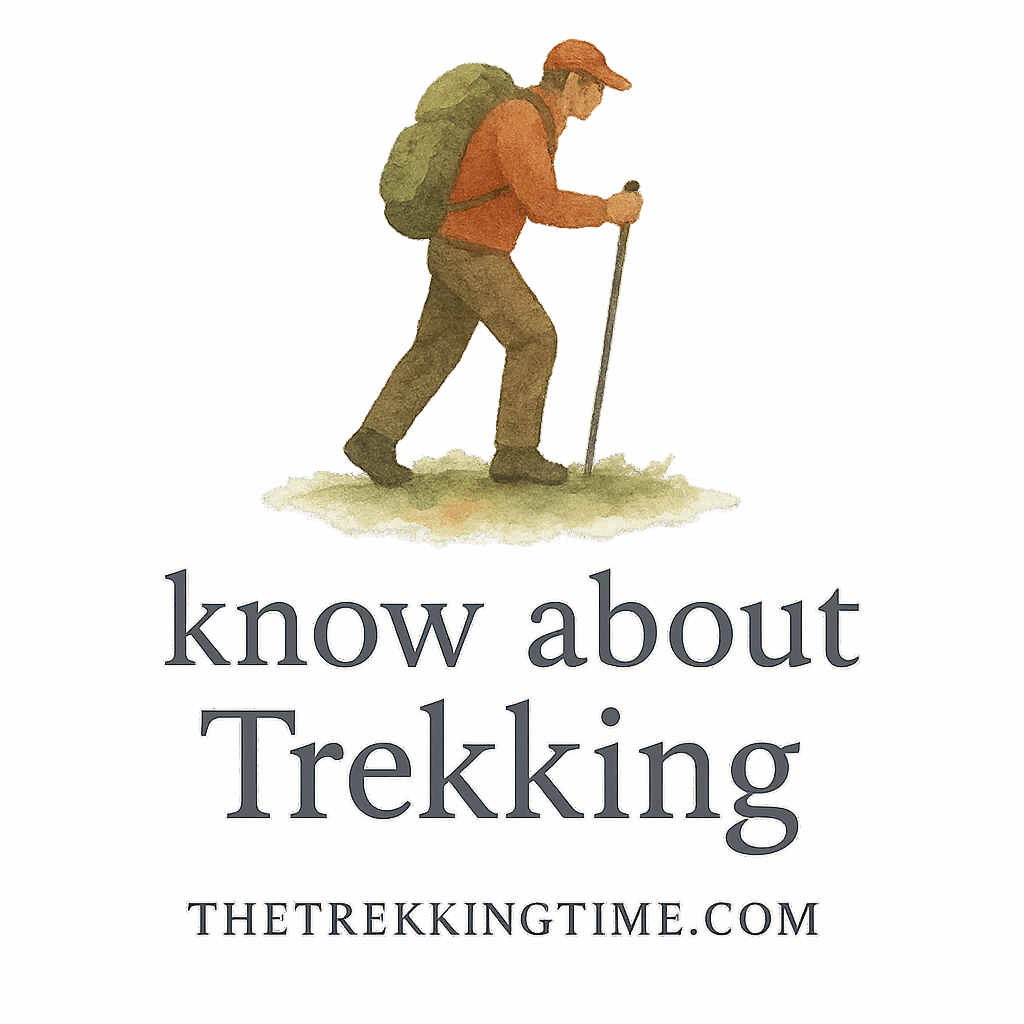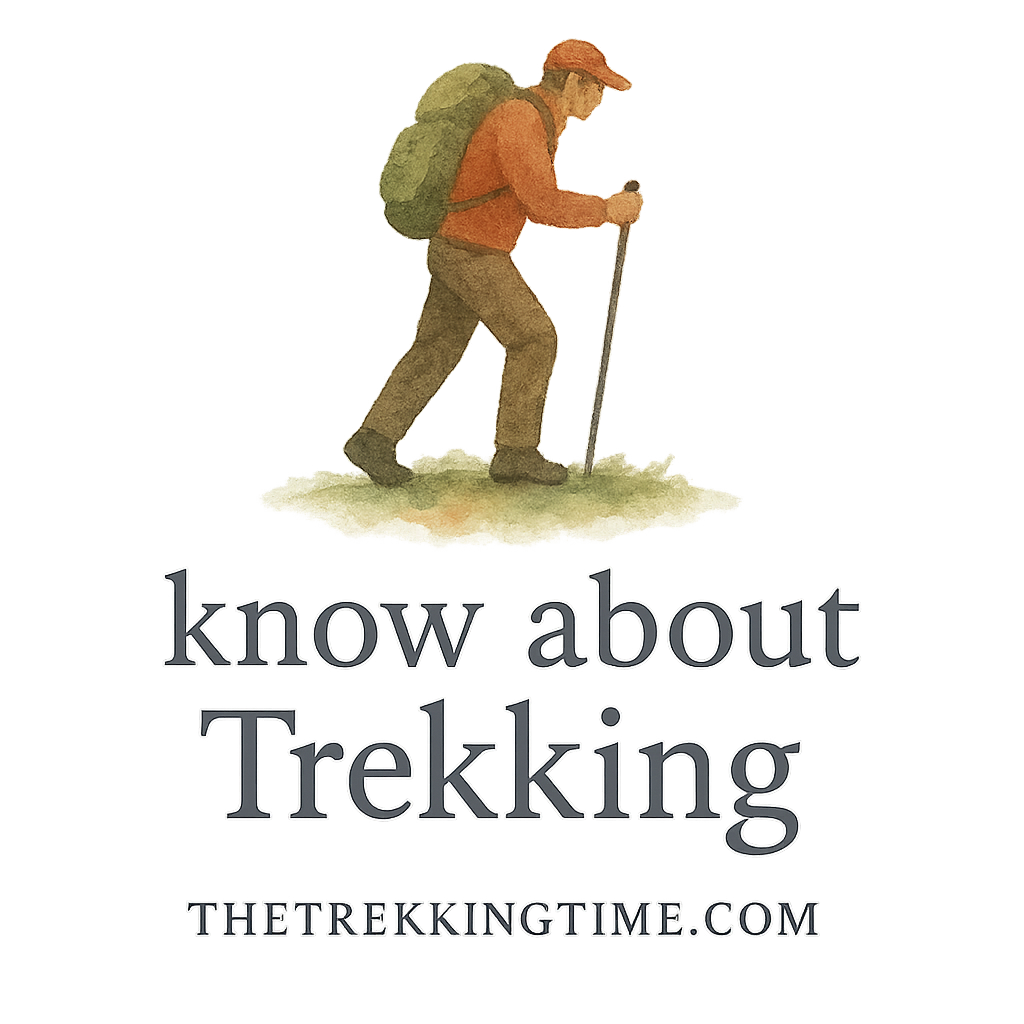Introduction: Why Proper Gear Matters
Let’s be real—trekking isn’t just a walk in the park. Whether you’re venturing into the Himalayas or exploring weekend trails, the gear you bring can make or break your experience. Having the right trekking essentials ensures not only comfort but also safety, especially in challenging conditions. That’s why we’ve curated this list of the top 10 must-have trekking gear for every trip.
Explore more essential trekking basics here: Trekking Basics
1. Backpack: Your Mobile Basecamp
A quality backpack is your portable home. Everything you need is carried on your back, so you want something reliable and comfortable.
How to Choose the Right Trekking Backpack
Look for a backpack with a capacity that matches the trip length: 30-50L for day hikes or weekend trips, and 50-70L for longer expeditions.
Features to Look for in a Backpack
- Padded shoulder straps and hip belts
- Multiple compartments
- Waterproof or rain cover
- Breathable back panel
Check out tips on packing your gear here: Trekking Gear & Packing
2. Footwear: The Foundation of Every Trek
Your feet carry you every step, so treat them right.
Hiking Boots vs. Trail Runners
Boots offer ankle support and durability, while trail runners are lightweight and breathable. Choose based on terrain and personal preference.
Sizing and Comfort Tips
Always go half a size up. Break in your boots before a big trip to avoid painful blisters.
For fitness prep for demanding treks, visit: Trekking Fitness Prep
3. Clothing Layers: Stay Comfortable in Any Climate
Trekking environments can change rapidly. Layering helps regulate body temperature.
Base Layer, Mid Layer, Outer Layer Explained
- Base: Moisture-wicking
- Mid: Insulating (fleece or wool)
- Outer: Waterproof and windproof
Moisture-Wicking and Insulation Essentials
Avoid cotton. Opt for technical fabrics that dry fast and retain heat.
4. Navigation Tools: Don’t Get Lost Out There
You can’t always count on your phone’s GPS.
Maps, Compasses, and GPS Devices
Old-school tools are often more reliable. Always bring a map and compass even if you use GPS.
Digital vs. Analog Navigation
Digital tools are convenient but prone to battery issues. Analog tools are foolproof.
Visit more on safe trekking practices: Trekking Safety Tips

5. Hydration System: Keep Your Body Fueled
Staying hydrated is non-negotiable.
Water Bottles vs. Hydration Bladders
Hydration bladders are great for sipping on the move, while bottles are easier to refill and clean.
Water Purification Methods
Carry a filter or purification tablets to treat natural water sources.
6. Nutrition and Snacks: Energy on the Go
You’ll burn more calories trekking than you think.
Lightweight, High-Calorie Foods
Pack nuts, dried fruits, energy bars, and jerky.
Meal Planning for Multi-Day Treks
Pre-packaged dehydrated meals are lightweight and easy to cook with just hot water.
Explore health and wellness through trekking: Trekking and Wellness
7. Shelter and Sleeping Gear: Rest is Critical
A good night’s sleep helps you recover.
Tents, Sleeping Bags, and Pads
Choose lightweight and weather-appropriate options.
Weather-Appropriate Sleeping Gear
Always check the nighttime temperature and match your gear accordingly.
8. First Aid Kit: Safety First
Accidents happen. Be ready.
Essentials in a Trekking First Aid Kit
Bandages, antiseptic wipes, painkillers, tweezers, moleskin, and medications.
Training and Emergency Preparedness
Basic first aid training can make a big difference.
9. Trekking Poles: Support and Stability
They may look nerdy, but they save knees!
When to Use Trekking Poles
Especially helpful on steep ascents or descents.
How to Choose the Right Poles
Look for adjustable, lightweight, and durable designs.
10. Multi-Tool or Knife: The Ultimate Trekker’s Companion
You never know when you’ll need to cut, slice, screw, or open something.
Survival Uses and Utility Functions
From gear repairs to food prep, this is your tiny toolbox.
Bonus Tips: Additional Items Worth Packing
- Headlamp with extra batteries
- Sunscreen and lip balm
- Repair kit with duct tape and needle
- Power bank
- Trash bag (Leave No Trace!)
Conclusion: Be Prepared, Not Overpacked
Trekking isn’t about carrying the heaviest backpack—it’s about smart, strategic packing. Focus on quality over quantity, and always think ahead to what your trek demands. With the right gear, you’re not just ready for the trail; you’re set to thrive on it.
Dive deeper into trekking routes and gear here:
FAQs
1. What’s the most important item for a beginner trekker? A well-fitted backpack. Comfort and support matter a lot!
2. Can I use running shoes for trekking? It depends on the trail. For rocky or uneven paths, hiking boots are better.
3. How do I keep my backpack light? Stick to essentials, use lightweight gear, and plan meals smartly.
4. Are trekking poles necessary? Not mandatory, but they greatly reduce knee stress.
5. How do I prepare physically for trekking? Train with cardio, strength exercises, and hikes with a loaded backpack. Read more: Trekking Fitness Prep
6. Is a GPS device better than a phone app? Dedicated GPS devices are more reliable in remote areas.
7. What clothes should I avoid when trekking? Avoid cotton—it retains moisture and gets cold fast. Opt for quick-drying, technical fabrics.
For more insights, explore:
- https://thetrekkingtime.com/tag/trekking
- https://thetrekkingtime.com/tag/trail
- https://thetrekkingtime.com/tag/performance


